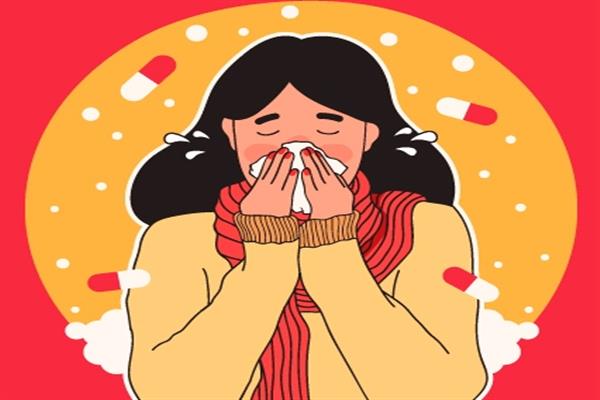Kashmir Magazine By : Kashmir Magazine | Srinagar, Publish Date: Friday, March 17, 2023 12:18:40 AM | Updated Date : Friday, March 17, 2023 12:18:40 AM

H3N2 prevention: Things to do
• Get your annual flu vaccination.
• Wear a mask in crowded places to avoid infection.
• Washing hands regularly must be taken seriously.
• Take plenty of fluids.
• Avoid touching eyes and nose.
• Avoid contact with people who are ill.
KM Desk
A flu-like situation has gripped most parts of the country. Almost everyone knows someone who is suffering from fever, cough, runny nose and body ache. While flu is not uncommon at this time of the year when the weather changes from extremely cold to warm, this is not the seasonal flu warn experts. “This is caused by H3N2, an influenza virus. Symptoms are similar to those of seasonal flu viruses and can include fever, cold, cough, runny nose, and possibly other symptoms such as body aches, nausea, vomiting, or diarrhea. In severe cases, it can cause respiratory distress,” says Dr. Umang Agrawal, Infectious Diseases Consultant, PD Hinduja Hospital & MRC, Mahim. Air pollution is also playing a significant role in increasing the number of patients affected by viral diseases.
So, how serious is the H3N2 virus? “Technically anyone who comes in contact with the virus can contract this disease. Most people with normal immunity will manifest symptoms of upper respiratory tract infection. However, this particular virus can cause severe complications with certain high-risk groups. These include patients with pre-existing lung diseases such as COPD, asthma, smokers, diabetics, patients who are immune compromised or those who have low immunity, and patients above 65 years of age,” says Dr Agrawal.
The H3N2 virus can be extremely contagious and is transmitted from an infected person to another through droplets released when coughing, sneezing, or talking. It can also spread if someone touches their mouth or nose after contacting a surface that had the virus on it. Pregnant women, young children, elderly adults, and persons with underlying medical issues are at a higher risk of flu-related complications.
Can it be prevented?
COVID-proper conduct, which we have learnt in the past few years can aid in the prevention of flu. These include avoiding crowded places, wearing a face mask, washing hands frequently with soap and water and not touching your face too often. Additionally, experts also recommend yearly influenza flu shots for prevention of the flu.
The Indian Medical Association (IMA) has issued cautionary note and directed doctors and pharmacists to avoid the prescription of antibiotics to H3N2 patients. “People start taking antibiotics like Azithromycin and Amoxiclav, etc., that too without caring for dosage and frequency and stop it once they start feeling better. This needs to be stopped as it leads to antibiotic resistance. Whenever there will be a real use of antibiotics, they will not work due to the resistance.”
Oseltamivir is the antiviral drug used to treat children and adults infected by H3N2 virus. “It has to be taken exactly as directed by your doctor. Most of the cases are self-limiting and the patients improve within five-seven days of contracting the disease. The use of Oseltamivir is especially helpful in earlier recovery from illness,” adds the expert.
When you or a loved one has the flu, the last thing you may feel like doing is eating. And it’s certainly okay to eat a little less, as you likely have a reduced appetite believes Dr Deepu John, chief Ayurveda physician, Kairali The Ayurvedic Healing Village. “The first line of treatment to manage the flu is to rest the body. This will help to decrease the viral load in the body and increase immunity. And since the digestive fire in the body is at its lowest you should avoid heavy meals, spicy foods, raw salads and cold items such as curds.
Simple food like rice or millet porridge and soups are easy on the stomach. Sip warm water throughout the day. This can be made by boiling a litre of water with an inch of dry ginger and a teaspoon of whole coriander seeds. This helps to get rid of headache and sore throat associated with flu. You can also gargle with triphala. Just boil two glasses of water with half a teaspoon of triphala powder. Reduce it to a glass, add a pinch of rock salt and gargle with the water,” says Dr John.
Triphala, a well-recognized and highly efficacious poly-herbal Ayurvedic medicine consisting of fruits of the plant species Emblica officinalis (Amalaki), Terminalia bellerica (Bibhitaki), and Terminalia chebula (Haritaki), is a cornerstone of gastrointestinal and rejuvenative treatment.
According to nutritionist Shweta Shah, founder of Eatfit24/7, ghee and cloves are the magic ingredients that go a long way in helping your body to recover and replenish. “According to Ayurveda, cloves help to break down congestion while ghee as a healthy fat helps to reach all the organs in the body. Take a tablespoon of ghee and warm it along with a few pieces of cloves. Strain it and drink it. Heating enables the cloves to release its oil in the ghee. This concoction is a natural soother and great to cure sore throat, cough, cold and sinus. It’s safe for children as well as adults,” explains Shah.
For blocked nose and chest congestion she suggests making a potli of ajwain (carom seeds). “Ajwain is nothing short of a wonder spice. It contains thymol, which has antiseptic and anti-inflammatory properties. Place the potli on a heated tawa for five-seven minutes or in the microwave for 3-4 minutes. Then place the preheated potli over the third eye chakra or in the middle of both your eyebrows on your forehead. For the next position, hold it next to your nose so that you can take in the vapors by inhaling it. Lastly, hold the warm potli over your neck and chest for warm compress. This brings instant relief from most flu-related symptoms.”